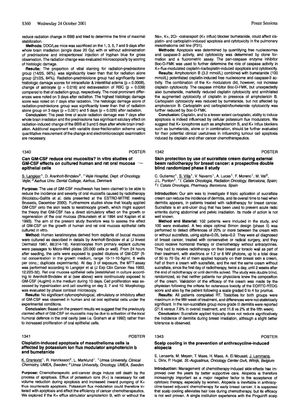Scalp Cooling in the Prevention of Anthracycline-Induced Alopecia
April 2001
in “
European journal of cancer
”

TLDR Scalp cooling prevented hair loss in half of the patients, despite significant side effects.
The study investigated the effectiveness of scalp cooling in preventing anthracycline-induced alopecia in 29 early breast cancer patients undergoing chemotherapy. Using the PinguinR scalp cooling system, 51% of patients still developed alopecia, resulting in a 50% success rate for the cooling method. Despite side effects such as pain, headache, dizziness, nausea, and vomiting, 70% of patients favored the treatment. The study concluded that while scalp cooling was effective for half of the patients, the side effects were significant, yet the overall patient appraisal was positive.




